blogpost 59, 08-JUN 2025, Reijer Staats
To share is to heal

“Mate, I missed something,” a friend from Holland texts me after reading my latest blog post. “I think it’s the wine. This time I didn’t feel the romance, it read more like a postcard. But I still love you...” And suddenly, Jaap appears before my mind’s eye, a mentor from the past, with a short grey beard, his kind therapist´s eyes behind a pair of simple glasses looking at me. I hear his voice.
I’m telling a long, endless story while Jaap picks up an imaginary thread and slides it through an invisible needle. “What part of this is the common thread?”
When I started sharing my vulnerabilities beyond our private conversations and told Jaap enthusiastically about the reactions, he concluded: “And thát, Reijer, is what we call the universality of the problem: To share is to heal.”
Jaap’s one-liners… I could easily gather them into a small book of wisdom.
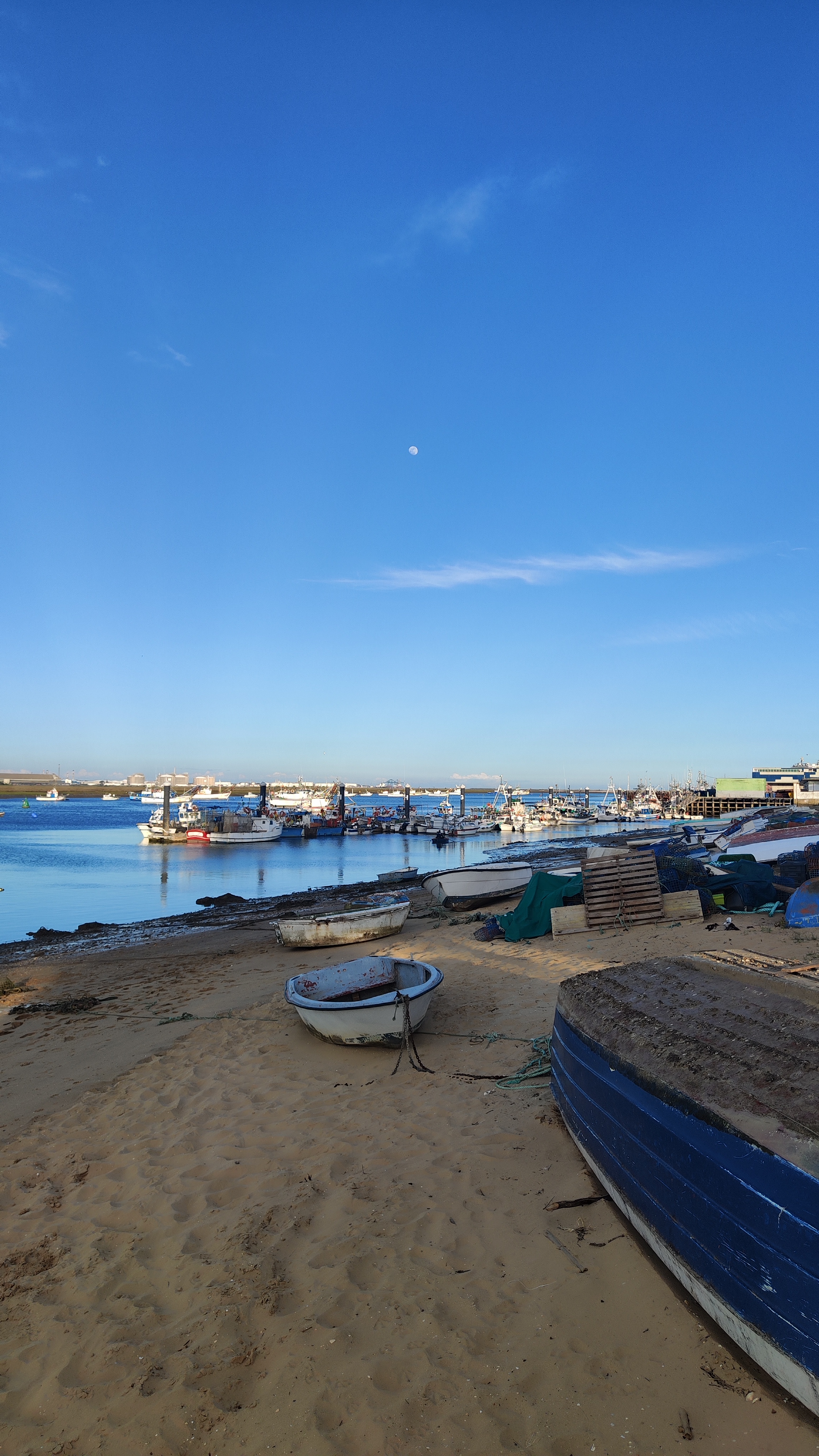
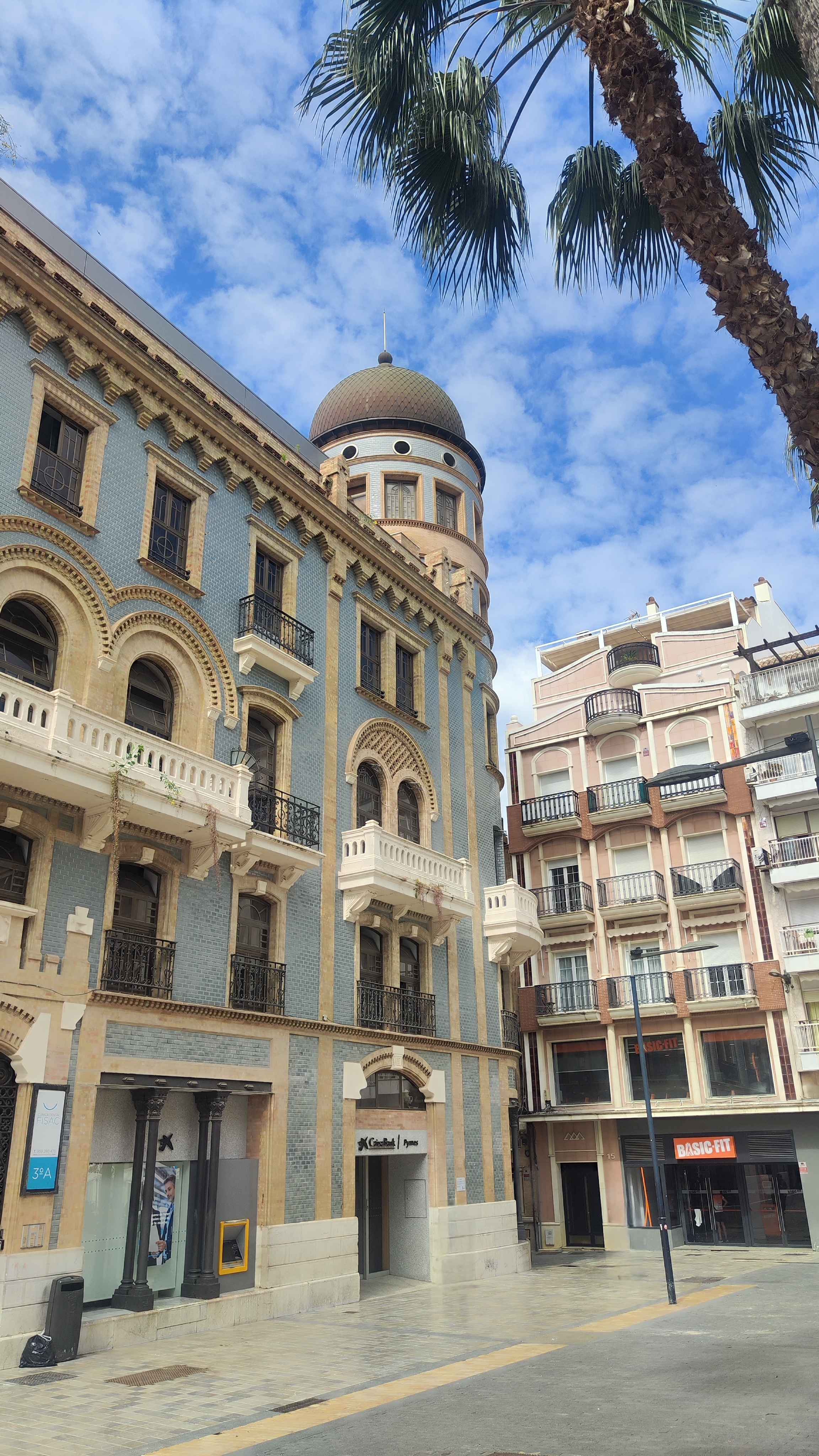
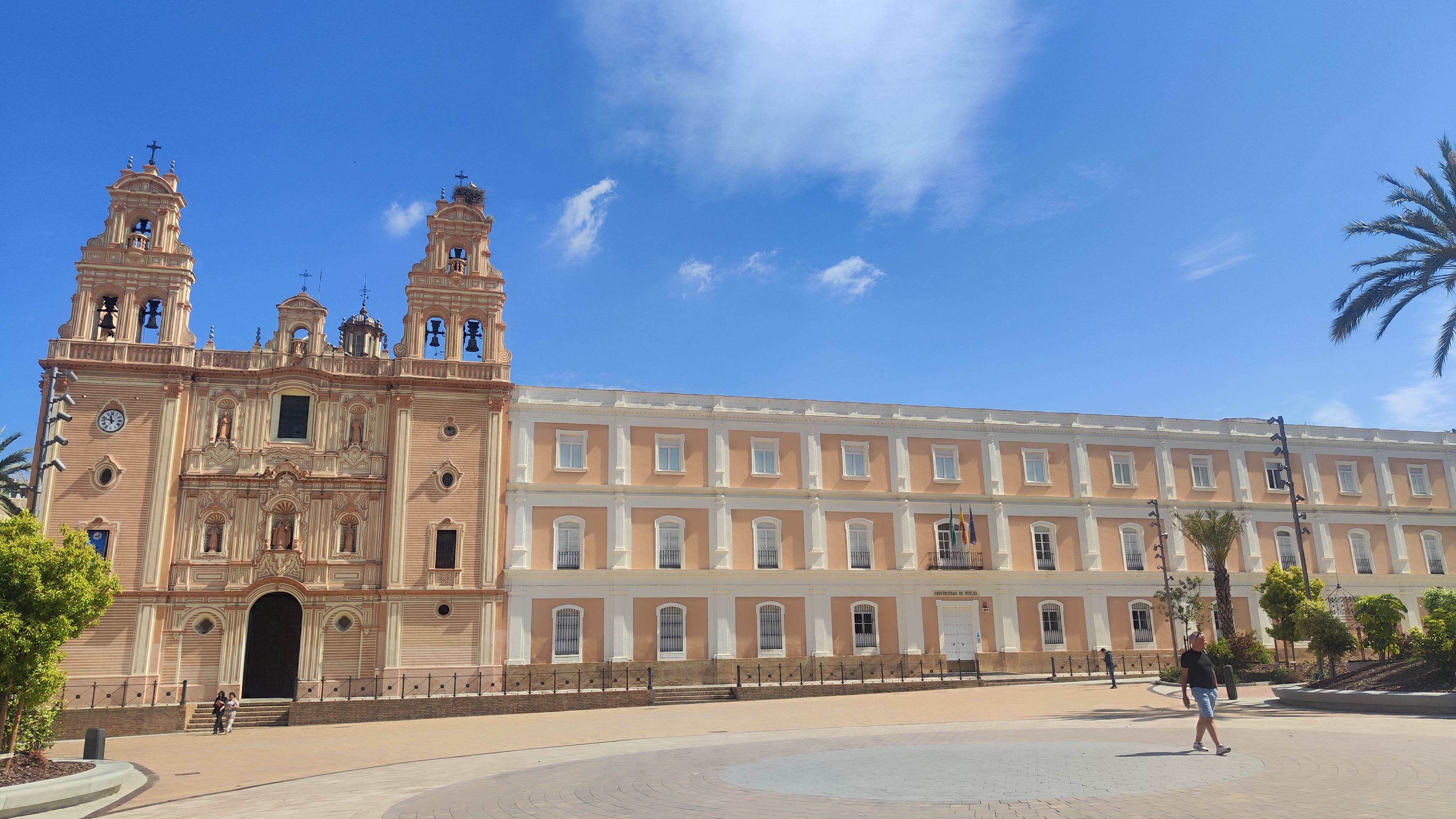
Pura Huelva
Johan and I treated ourselves to a city trip and are wandering through Huelva, the capital of the Andalusian province of the same name on the Atlantic coast. Close to the Portuguese border and surrounded by lagoons and nature. What a colorful city! Belle Époque architecture alternates with brutalism. In the parks, jacarandas bloom purple and roses red. Walls are plastered with retro posters of bullfights and locally brewed beer. The marble streets and plazas lie deserted.
Only when the bells ring do we realize why we were the only ones walking under the tall palm trees. From the church come niños and niñas dressed in costumes, sailor suits, or white dresses. The children’s screams echo off the facades and a cloud of hairspray and heavy sweet perfume hanging around the adults suddenly fills the streets. Clearly: it is that one Saturday in May, the day of First Communion.
As many multinational companies left their marks on the urban architecture of cities where they were based, here the British mining company The Rio Tinto Company did the same as a major local employer from the late 19th century. We stroll through a working-class neighborhood in Victorian style, admire an iron pier inspired by the Eiffel Tower, and photograph a former colonial Grand Hotel, once built for business contacts and investors. We have taken enough photos, are done with the architecture, and by now we’re somewhere I don’t even know.
It’s lunchtime!
Our heads bend over our phones. Arguing over where and how, Johan and I navigate to the traditional cuisine of Huelva. We find it half an hour’s walk away, right in the city center. At Pura Huelva on the terrace, we order raciones para compartir: pistachio pâté with mango compote, artichoke hearts with romesco sauce, and scrambled eggs with porcini mushrooms and chestnut cream. Delicious!
From the noise inside the packed restaurant, the waitress returns to the terrace carrying a plate with a huge octopus tentacle. Johan makes a face. I shake my head: “No, no, para nosotros no.” After the pulpo is offered a second time, a discussion breaks out among the serving staff, and the person who took our order comes over to our table for an explanation.
In my memory, I see my finger sliding over the menu, stopping at the bottom left at pulled pork, and I still hear her confirming: “PULL PO,” as if there were something wrong with her English pronunciation.
Johan rolls his eyes, watching my face turn red.
While waiting for the alternative to the returned pulpo, at Pura Huelva there’s a constant coming and going of eccentric guests from the Communion celebration. Among the señoras, the pantsuit seems to be in fashion: from bright red, fitted with a wasp waist and a large white Adidas logo on the back, to a loose zebra suit or a Pierrot outfit above poison green platform soles. The footwear makes her a head taller than her boyfriend: the Glenn Medeiros type with a gold chain, shirt just a little too unbuttoned, chest hair showing. “Nothing’s gonna change my love for you...” Yes, he could turn around any moment now, and start singing.
The sailor suits are now covered in food stains, grass marks, and mud. The white dresses are no longer white. The children’s heads are heated from sugar and play, or completely collapsed over their father’s lap.
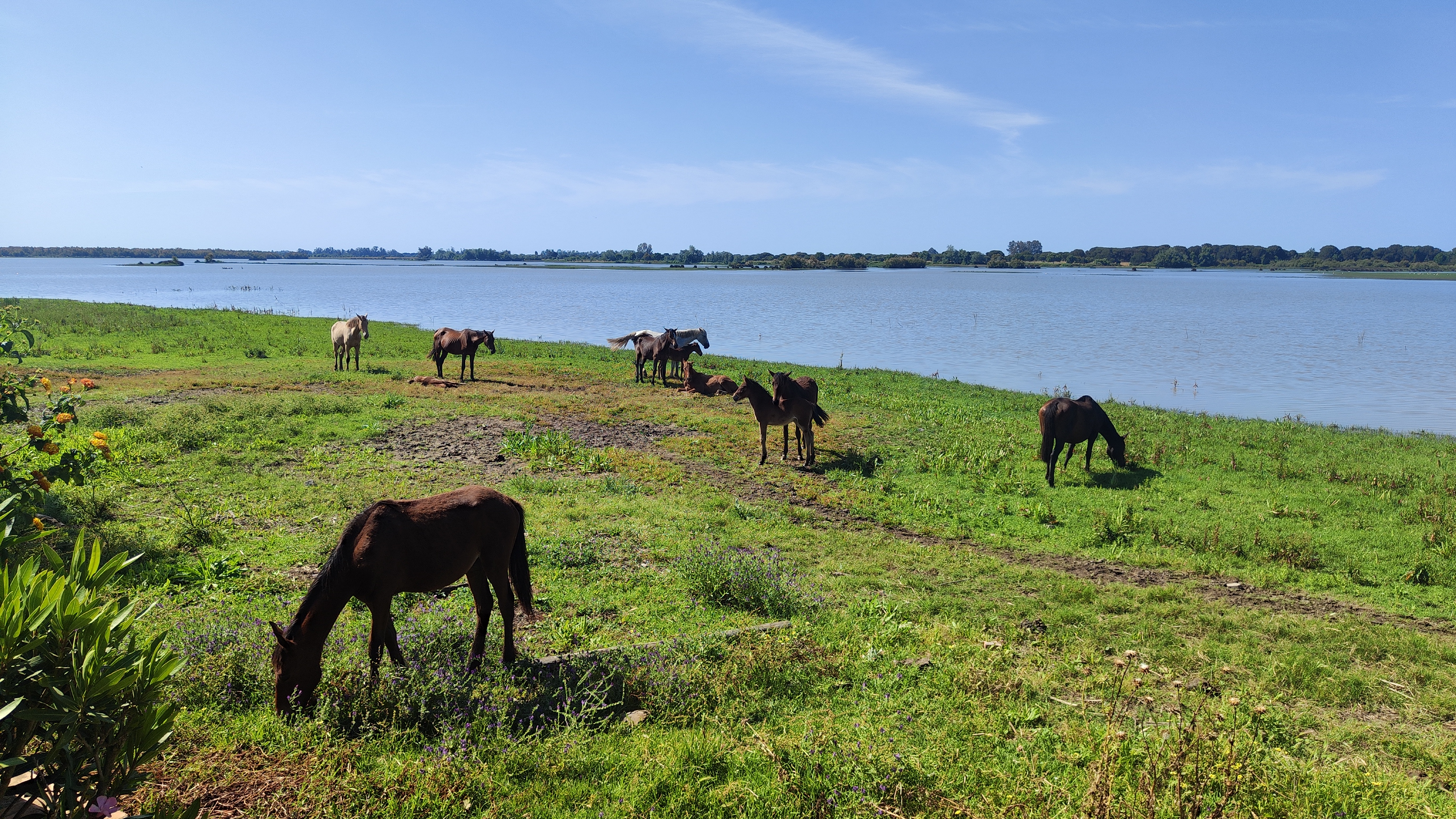
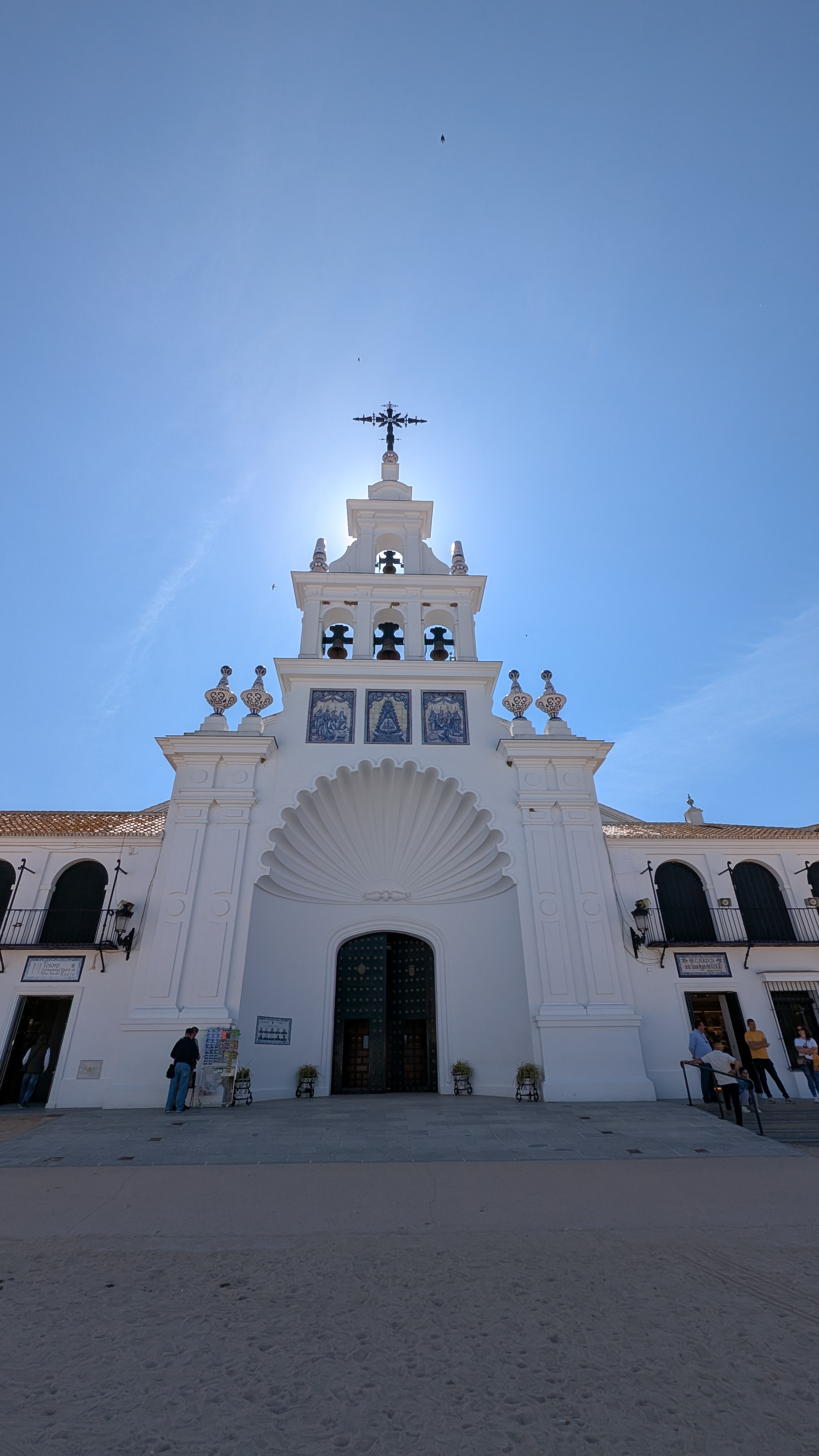
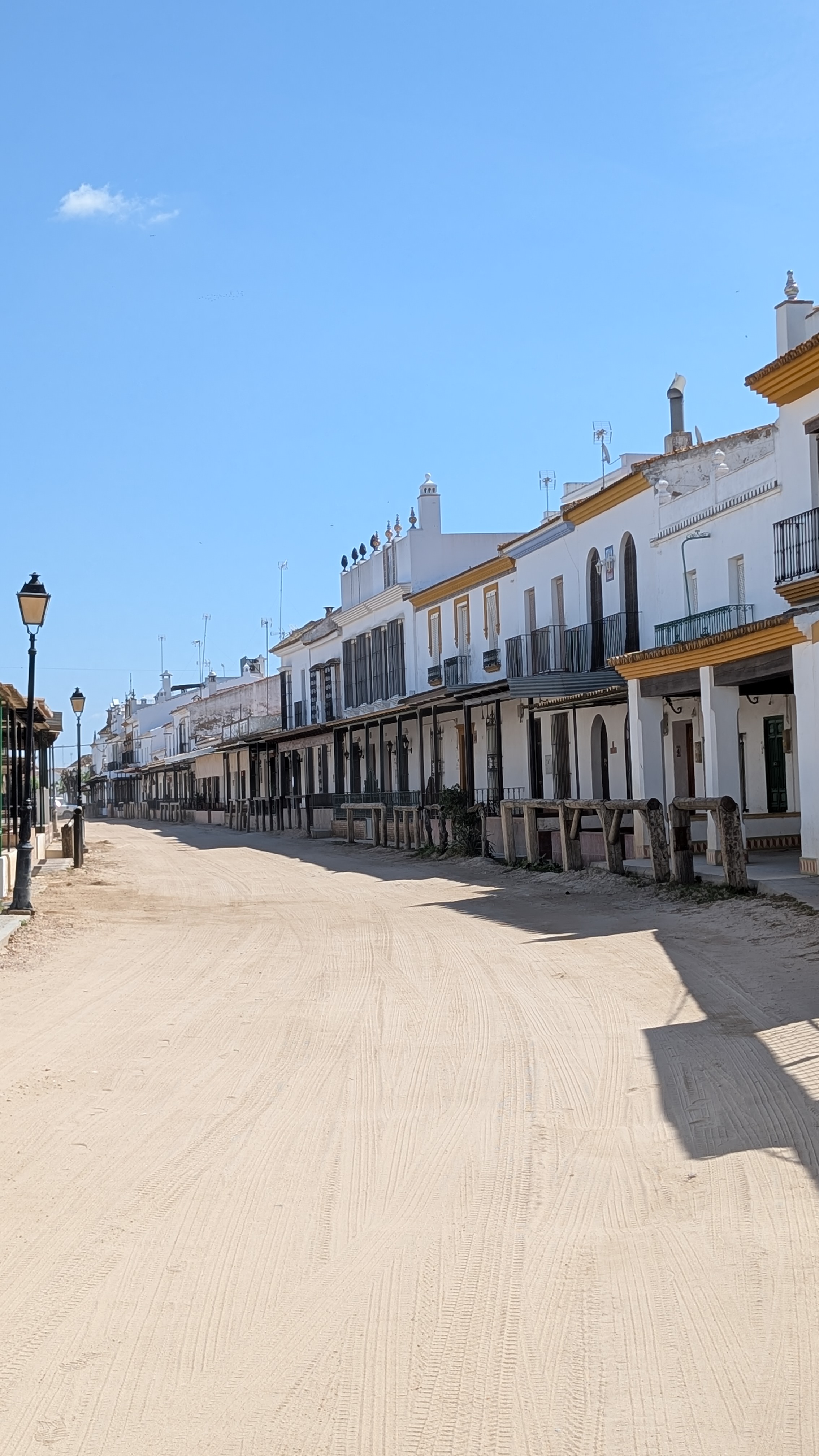
Huelva! We enjoyed the city, el Atlántico, and the huge navel oranges from Pedro’s orchard, our Airbnb host. After our city trip, we took a detour through Doñana National Park and the curious little town of El Rocío:
A lone flamingo and spoonbill. Many bird sounds. Horses with foals. Flat marshland in southern Andalusia that, to be honest, feels a bit Dutch. Streets and squares with a dusty atmosphere, white (western-style) buildings, churches and chapels, and ornate ceramic decorations. The infrastructure is clearly designed for the hundreds of thousands of pilgrims who come for the anual Romería. But for now: just one rather heavy caballero on horseback, probably the town’s sheriff on duty, lots of parked cars, the first shiny tourist buses arriving, and empty terraces and souvenir shops. Very interesting to see, but this won’t be our lunch spot for today. Quickly we start driving back to Almuñécar.
Huelva is already a memory.
And I notice my thoughts are drifting elsewhere.
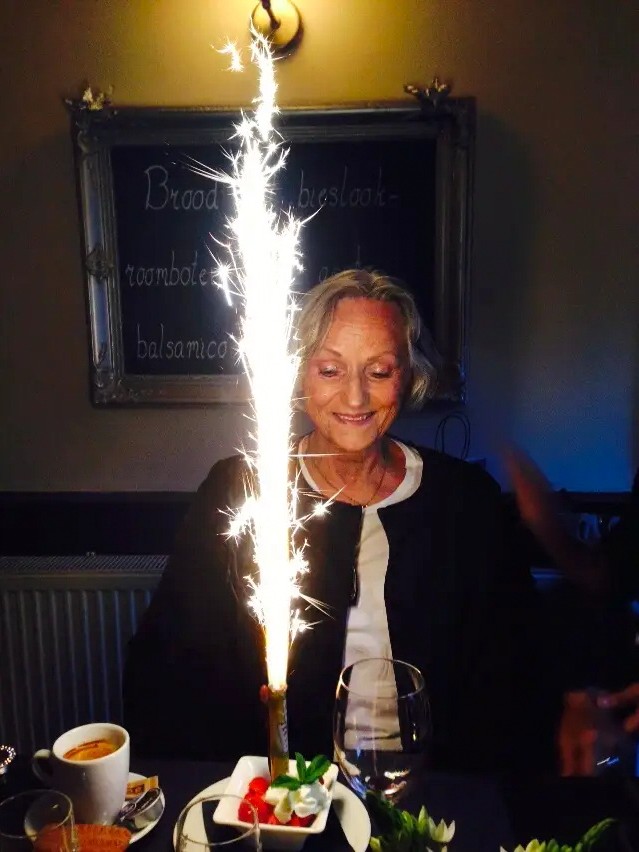
To share is to heal
It is spring. The birthdays of my father, mother, and sister, all gone now, and the death anniversaries of my parents all fall within one month. Something is in the way, and I notice I prefer not to feel it. When I am alone, walking along the beach, scanning the horizon for dolphins from a rock, or daydreaming under the full moon, my thoughts still drift there.
A story begins. First in my head, then on paper. I’m sharing it here.
Seventy years young, a sparkling dinner. On May 25, she would have turned 80. She would have easily reached that age, and even ten years more: healthy in body and mind, and eager for life.
Two years ago, she left this life.
My beautiful mother: mostly youthful, sparkling, disciplined, active, and engaged. Sometimes tired, down, and with little empathy. She was diagnosed with bipolar disorder, but thanks to medication she had been stable for decades.
In September 2022, heartfelt music on a TV show moved me deeply. I realized I was in grief for the loss of my mother who was still here. After my sister died, she stopped taking medication. Her behavior changed. She pushed people away. First me. Our strong bond as mother and son ended abruptly. And like an oil stain, many other relationships important to her faded too.
Bipolar disorder: the patient suffers, and so does the environment.
I reached out to the mental health care institution. My signals were ignored. My request for help unanswered. Even when she was forcibly hospitalized and medicated for a psychosis, I was not informed. "Why?" "Well," answered her mental health nurse, "your mother does not want that."
Around her own birthday (the day before my sister’s birthday), she was allowed to leave. After that spring bank holiday weekend, my mother did not show up for her appointment at psychiatric care.
Ring, ring, ring...
The empathetic voice of the Head Psychiatrist came next: "How are you? We always call relatives when a client commits suicide."
Time slips away. Two years without her. And if you ask me: how am I now? "Good!" I shout cheerfully. But inside me a voice says: "I long for my mom’s image again." It has broken down in that fucked-up year.
Often I recognize her ways and quirks in myself. And immediately I put labels on them. Her photo before my eyes? I quickly look away. Memories that appear move straight from the foreground to the background.
Yet you are in me. And I belong to you. There is work to be done to be okay with that again.
Happy 80th birthday, dear mom.
One day, I will put your photo up again.
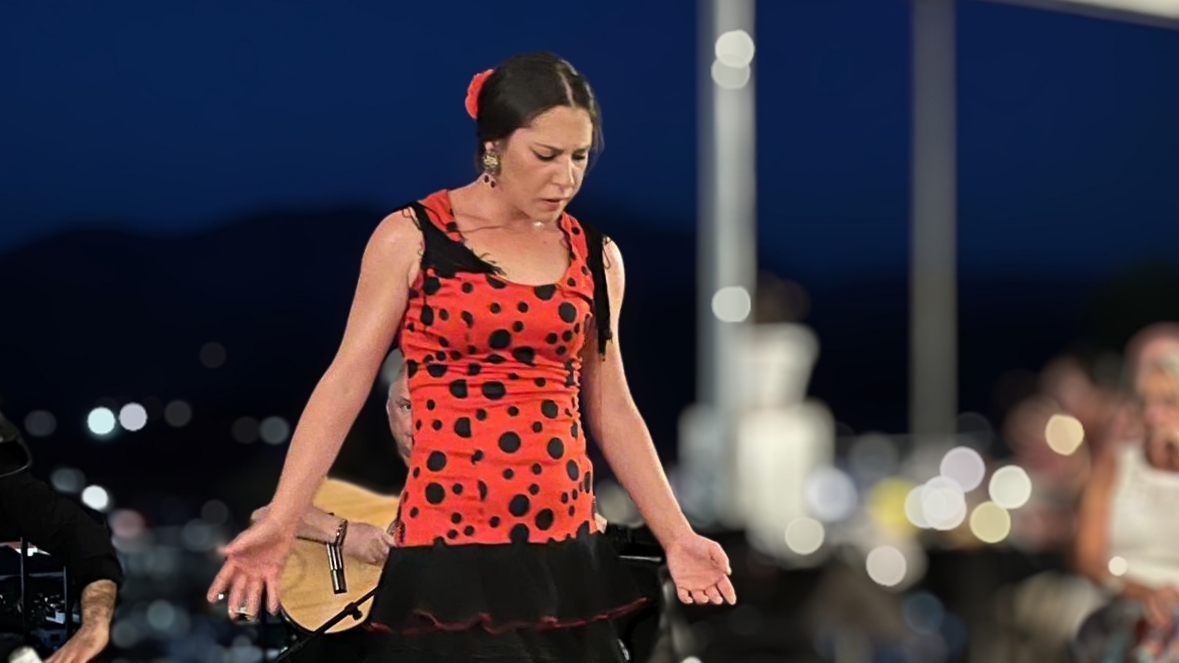

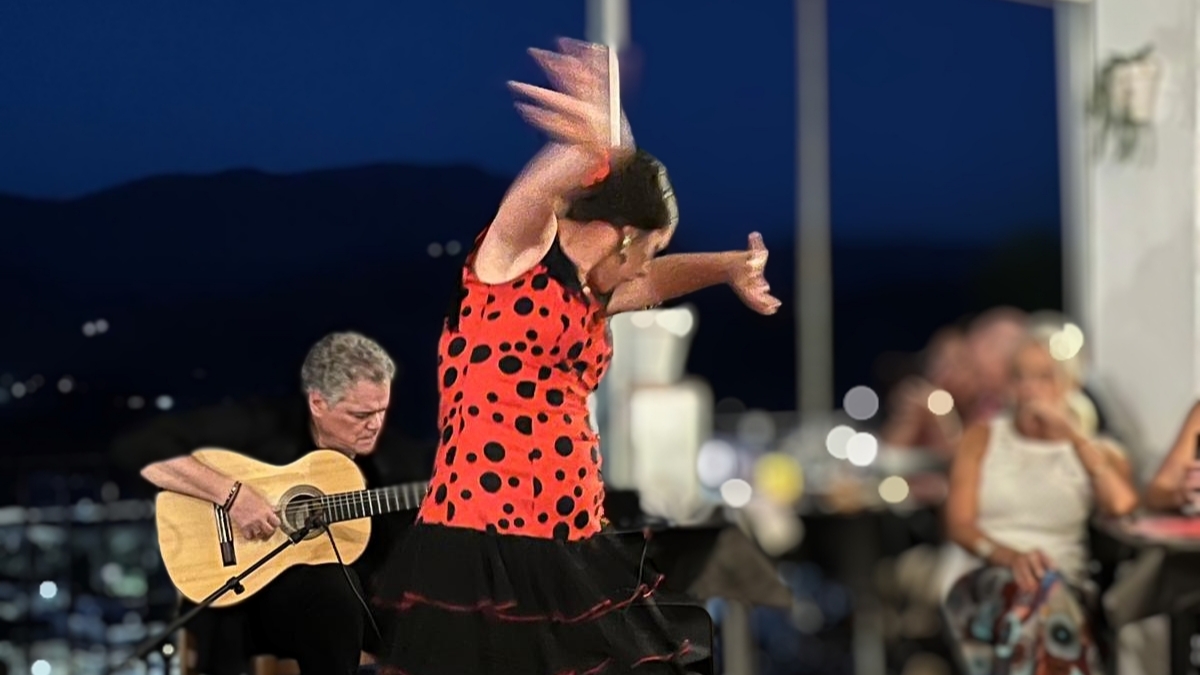
Martin, it´s Linda
On Monday evening we go for flamenco at Restaurante La Traviesa in Salobreña with our friends Jacqueline and Edwin – they also took the photos above. We imagined some kind of dinner show. Hadn’t been ourselves yet, though we always recommend it to our guests, who are always happy with it, no exceptions. The dancer is sweating, the red rose in her hair is about to fall out, and I feel like getting up to tuck it back in. But something about the way she looks holds me back. How beautiful to see this so close in such a small setting.
Sigh. If only we weren’t stuck behind this noisy French table in their sixties. They just keep on chatting. Every now and then, a sharp “Sssst” cuts through the restaurant.
We finish our main courses. The dancer takes a break. I turn my chair, lean in, and rejoin the conversation. There’s some mild irritation at our table too, especially about the dominant French woman at the corner of the table. Johan is clearly amused. He’s caught onto something and has a little idea running through his head. Smiling, he passes his phone around. On the screen: a TV character from the early 2000s. It’s Linda from Little Britain. “Well, now I really can’t look at that woman normally anymore!” he says with a grin.
And yes, there she is, sitting right next to us. Same outdated grey haircut: the corners of her mouth drop slightly as she talks showing her lower teeth. Her brown eyes are sharp and fixed. That constant scanning look, as if everything around her needs to be evaluated. A bit of a know-it-all. Just a bit too present, probably without even realising it.
During the segunda parte of the flamenco, Linda ends up front and centre in many of our photos. She spins dramatically towards the stage to clap enthusiastically, then swings back to her plate, where her mouth drops again immediately — she seemed kind, but is in fact not at all interested in the performance. She then puts her bottom teeth into her food and raises her index finger, moving it side to side almost nonstop, demanding the attention of the staff and her tablemates — of whom at least one, her husband?, is sure to be called Martin.
Sometimes life just feels like a sketch. Tonight with Linda in the center.
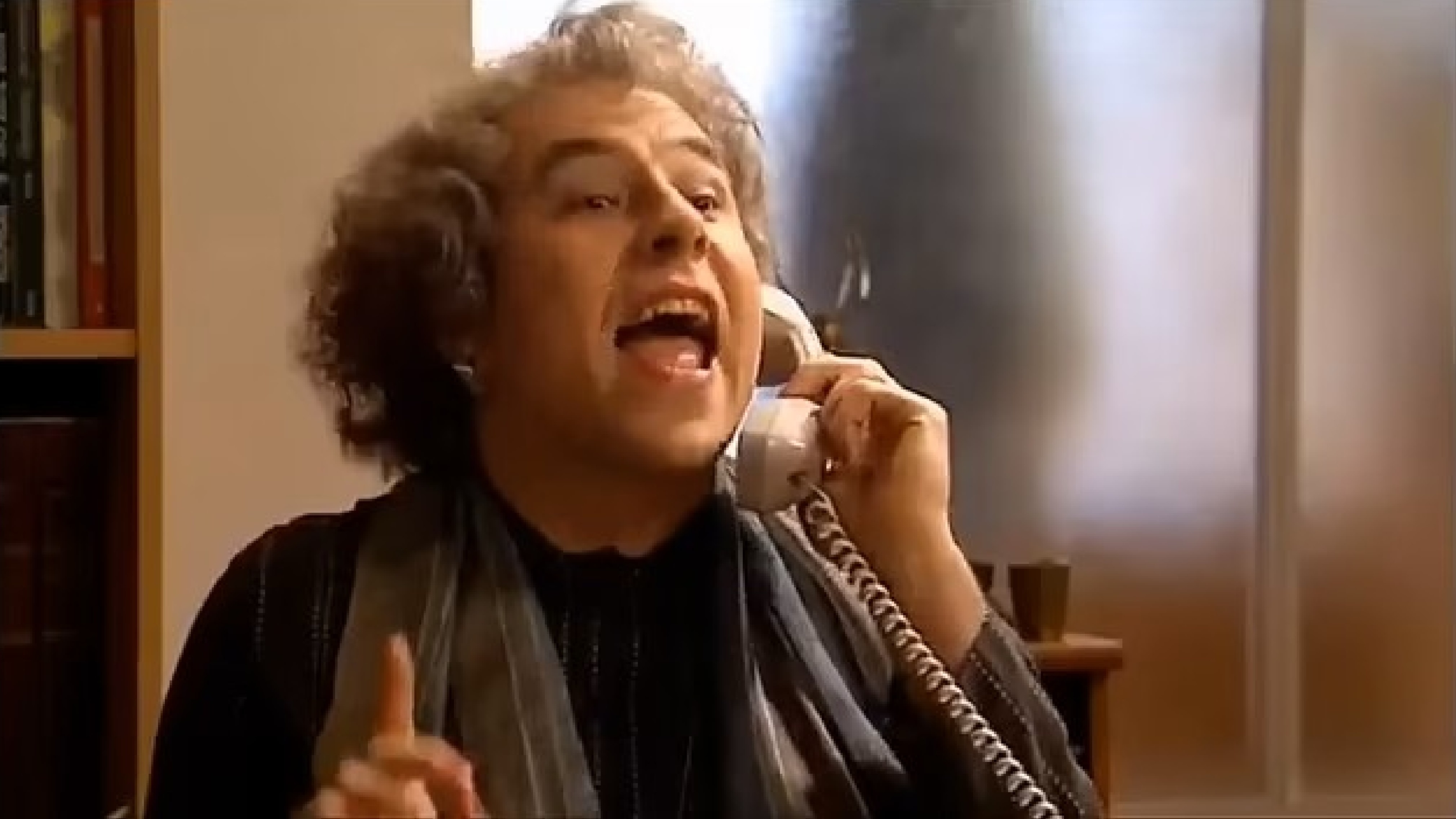
Duende
Wednesday evening, 21:00, Casa de la Cultura.
A second flamenco show in a short time with the same group.
Eloísa, the flamboyant former owner of our Casa Larimar, already introduced in the Spanish Chit Chat Fernando (only available in Dutch, sorry), talks about Pueblo Gitano (Gypsy people) and centuries of Spanish oppression.
The local flamenco school of Almuñécar appears in brightly coloured dresses and shows how, 700 years ago, gypsy footsteps first touched Spanish soil. A five-year-old dancer steals hearts right from the start, the school director shines in the lead role, and the heartfelt voice turns out to be that of a young muchacho sitting on a stool. In the background on stage, a few students move now and then. Clearly senior beginners from Northern Europe, somewhat stiff, always just a bit too slow and lacking the necessary flair. They keep drawing my attention and every now and then make me suppress a burst of laughter. And then, at the end of the show by the exit, a young dancer with Down syndrome spontaneously takes her moment with a solo and steals the show.
Ooohh. A small cry rises inside me, followed by the thought: there really aren’t many men. Maybe something for me? After all, I was still looking for a new hobby in Almuñécar.
Pueblo Gitano goes on about forced conversion to Catholicism, about oppression and persecution. During the Holocaust, many were deported to Auschwitz and only recently has Spain recognised Roma culture as one of the foundations of Spanish culture. Perhaps it is this history that makes the OLÉS from the audience feel like a shockwave through the theatre: duende, a power, a struggle, rising from within and from the soles of the feet upwards, just as poet Lorca so beautifully described.
This story is not just history, the story is current. I truly hope that people will start voting for tolerance again in future elections. Jaap´s "To share is to heal" remains relevant too. I received so many responses to my post about my mother. They soften again what had become hard. And all our Spanish worries over the past months, and there have been quite a few, have been reduced to mere sketches.
Hasta luego!
Johan & Reijer
Reijer Staats & Johan Pastoor | +31(0)6 - 28 27 1492 | contact@villa-andalusia.com | www.onthaasten.es
